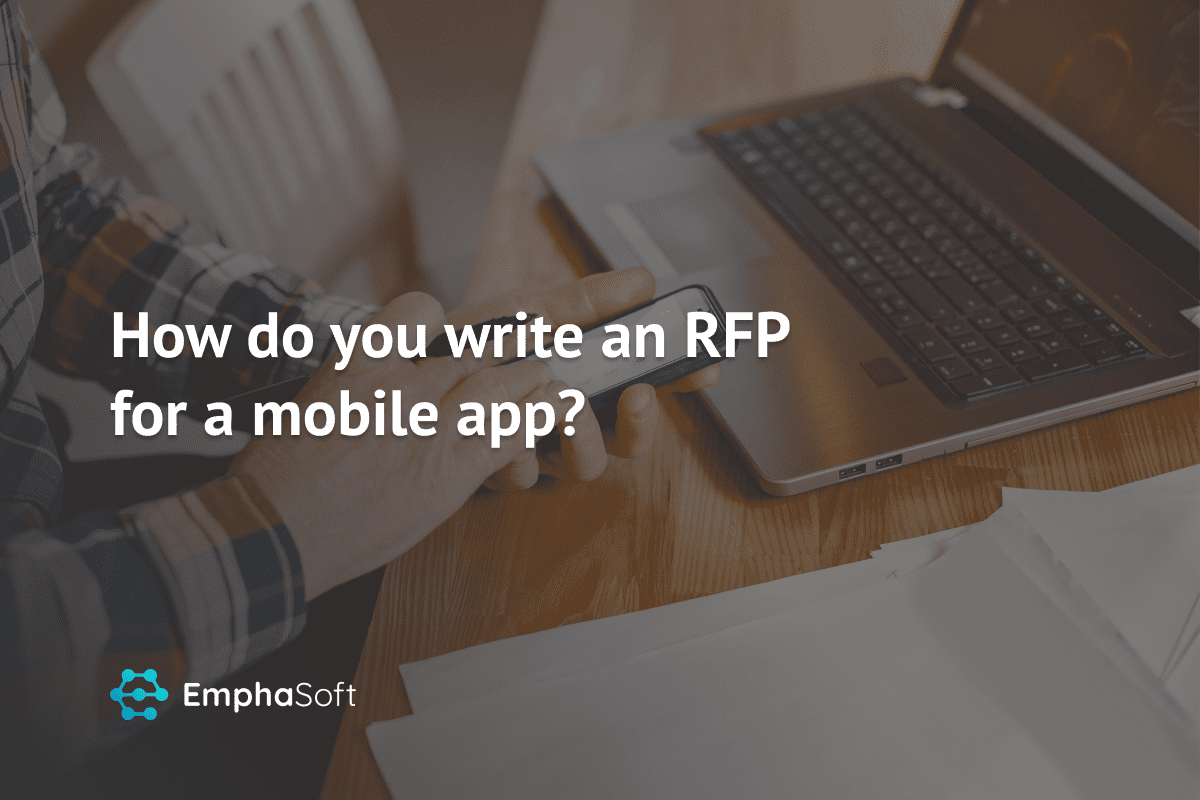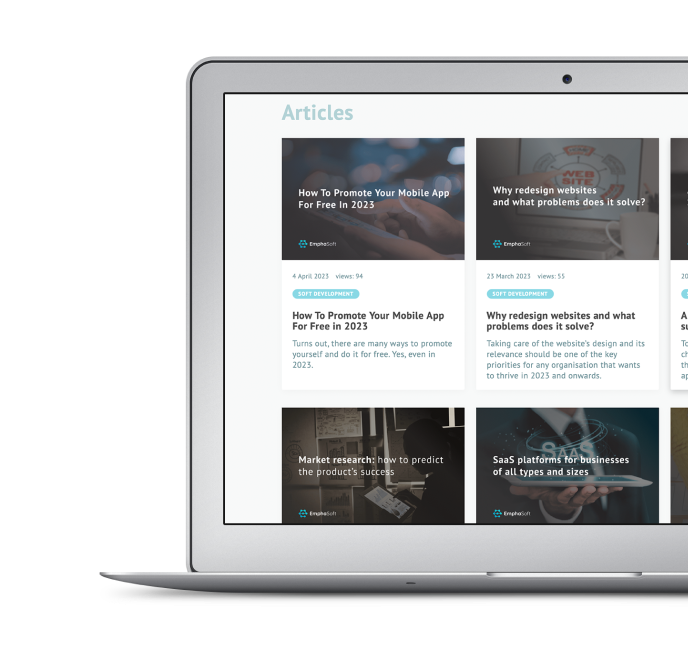An RFP or a Request for Proposal is a document that outlines specific requirements, questions, and information for potential mobile app developers that you will be working with.
Every RFP looks different, but most of them include the following key points:
- Expected functionality
- Design preferences
- Estimated budget
- Estimated timeline
- Absolute don’ts
- Goals that the app will achieve
Why do you need an RFP for your future mobile app? Well, there are several reasons to create this document:
- Gain a clear understanding of your requirements and needs
- Get on the same page with all internal stakeholders
- Save time and other resources during implementation
- Ensure your vision is understood and made into reality
- Reduce overall project risks by doing due diligence
- Initiate project documentation where an RFP would be the first step
Think of an RFP as a means of communication. As a business owner, you want to be understood when you outsource mobile app development to a company, such as Emphasoft. Surely, when working with experienced professionals, you can rely on their expertise and insight to figure things out and make decisions. But still, only you know best what you need, and the RFP is a perfect method of communicating that.
Creating an RFP for your mobile app
Now that we understand what an RFP is and why you need it for your future mobile application, let’s look at the step-by-step process of creating one for your company.
Step 1: Identify who will be working on the RFP on your end. It’s important that all key internal stakeholders get a say in the process, but you should also avoid involving too many people in the decision-making, otherwise, you will get nothing done.
Step 2: Define the project details. Come together with the shareholders and outline the key elements of the future project: the problem statement, key goals, the budget, the timeline, must-haves, and good-to-haves. You don’t necessarily have to go into full detail at this step, but outlining everything briefly will give you a structure you’ll be able to fall back on as you continue writing your RFP.
Step 3: Research the vendors’ market and come up with a list of vendor requirements. The vendor will be responsible for the production and the outcome of your mobile app, so there has to be some minimum requirements for companies that you’ll partner with. You can create this list without the research, but it’s best if you see what is really out there and adjust your expectations and requirements accordingly.
Step 4: Provide the company background. A brief overview of what your business does, the big goals, vision, and mission, and anything else you deem significant will help potential vendors understand you better and create stronger proposals.
Step 5: Outline the submission format. Everyone likes things to be a certain way, so if you want to receive submissions that work for you, let the vendors know what it should look like.
Step 6: Think about and write down the evaluation criteria. How will the project be evaluated? What will you be looking at? What are the key outcomes you’d want to see? Naturally, these criteria can evolve and change down the line if the project's direction shifts or new conditions come into play. Still, there must be something tangible right from the start that the vendor will be able to consider and accommodate as they launch the development.
Step 7: Write the questions for vendors. Separate them into two groups based on the types of answers they should generate: Yes/No or elaborate. It’s a good idea to start with absolutely essential questions and put them in the Yes/No format so that you can eliminate unqualifying vendors early and save time. Make sure you include questions from multiple categories: general, customer and competition, experience, approach, pricing, risk management, and security.
Step 8: Add terms and conditions. What will your cooperation be like from the legal perspective? What is expected of both parties? It’s a good idea to put the formal T&Cs in the RFP to give potential partners a chance to review them in advance.
Bonus tips for writing an RFP for your mobile app
Here are a couple more tips that will make your RFP a success.
#1 Keep the RFP short. Yes, you have lots of useful information to share, but it is very helpful to cut down on the paragraphs you include. Not only will the shorter document be easier to work with for vendors, but you, as a client, will also have a much better time working through the proposals if they only contain the essential information.
#2 Save the RFP template and use it for future projects. You’ll have to adjust the template for the new product you’ll be working on, but it will still save you a lot of time.
#3 Don’t forget about the context. Providing pages and pages of requirements without context will not be helpful for vendors. More often than not, it will deter the best vendors from responding to your proposal.
#4 Notify vendors who didn’t make the cut. Once you know who you want to work with and contracts are signed, make sure you notify the companies whose proposals weren’t successful. Not only is it common courtesy and helps vendors with their forecasting and planning, but you will also maintain good business relationships with them by being respectful which might be helpful for your future projects.
Final thoughts
Investing time and effort into an RFP may seem wasteful, but it is quite the opposite. The more thought and detail you put into the documents at the start, the better communication you can expect with vendors, and the the better they will understand your requirements.
A mobile application is a big deal for any business. So, being clear with your requirements and expectations from the beginning will ensure smoother development and rollout processes. The mobile app project is complex by nature, so why not make it more efficient with an RFP?
Emphasoft works with startups, SMBs, and enterprises on building custom apps, web solutions, MVPs, legacy upgrades, and so much more. The common pattern we see is that clients who come with a well-thought-out RFP (or at least all of its components in mind) tend to spend less time on projects and are more satisfied with the end results. But even if you don’t want to prepare an RFP, come to us and we will identify all your needs and requirements.
Read next:
Flutter vs Java: Choosing the best framework
Wireframing and Prototyping: all you need to know
3 Features of a high performing website








